The world is going through a slow transition to PCIe Gen4. While the AMD EPYC 7002 Series “Rome”, several Arm CPUs, and IBM POWER9 support PCIe Gen4, the top-selling Intel Xeon platforms are still using 2012-era PCIe Gen3 until they bring Gen4 mainstream, likely 2021. As a result, we are in a stage where some storage, such as the Microchip Flashtec 3108 NVMe SSD controller is now joining the market to accelerate the early adoption of new faster storage.
Microchip Flashtec 8-channel PCIe Gen4 NVMe SSD Controller
We always find market forecasts interesting. Since Microchip shared IDC’s forecast, we simply wanted to show that PCIe/ NVMe SSDs are expected to explode in popularity over the next three years. While hard drives will remain large capacity and cheap, the rest of the market will largely abandon SAS and SATA SSDs in 2021-2022 according to IDC. Microchip is using this technology transition to launch its new line of products for that generation.
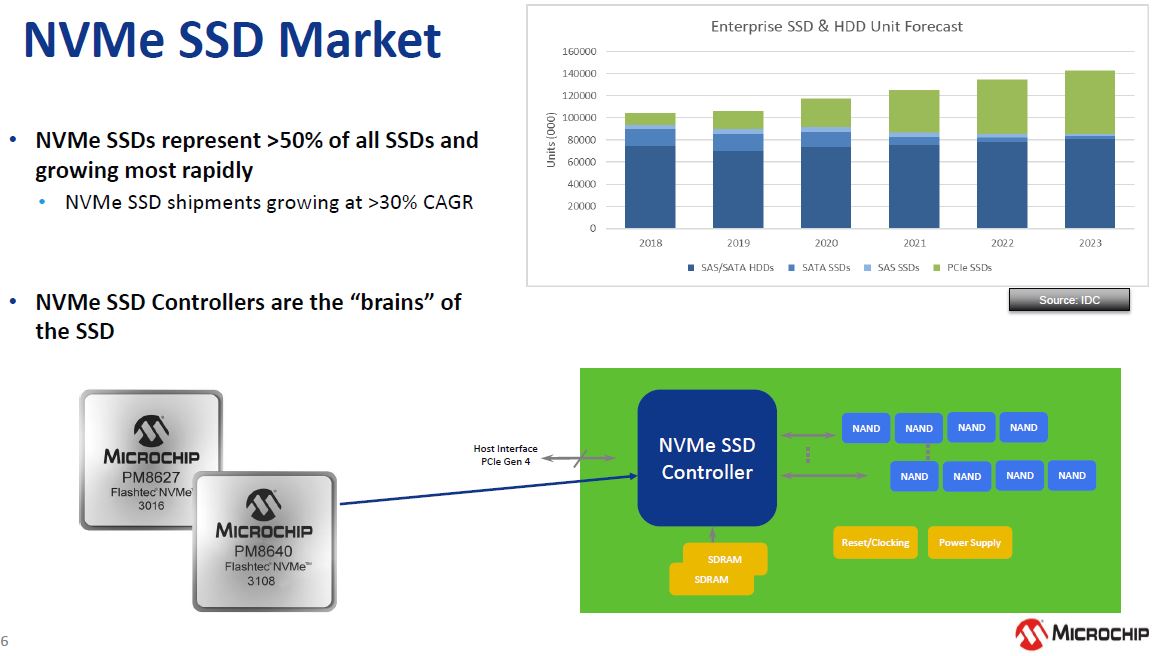
Microchip already announced and is in production with the Flashtec NVMe 3016 product. With this announcement, it is moving down the range to the numerically higher 3108 which is a bit confusing.
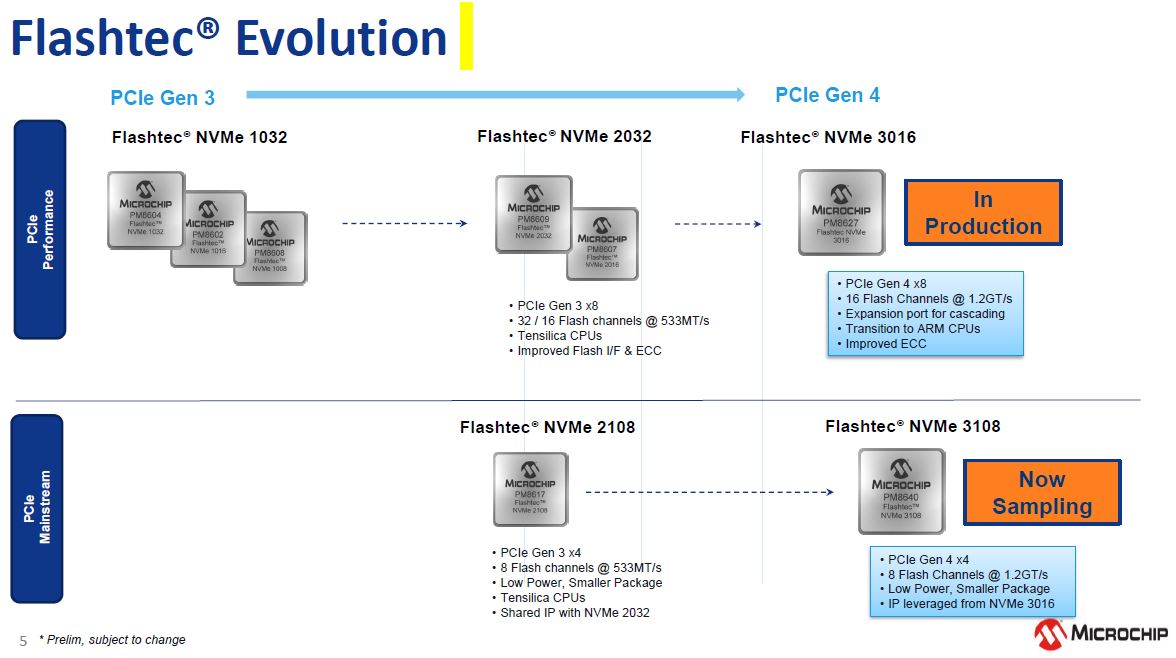
While the earlier chip was a PCIe Gen4 x8 capable device, the new controller is a PCIe Gen4. If you are wondering about the “8 channel” designation, that is not 8-channels of PCIe, instead, it is 8 channels to flash memory. Flashtec says the smaller form factor of the new controller will allow it to extend ranges down to M.2 and E1.S form factors. E1 and E3 form factors are those that we covered in a recent look at a Supermicro EDSFF server.
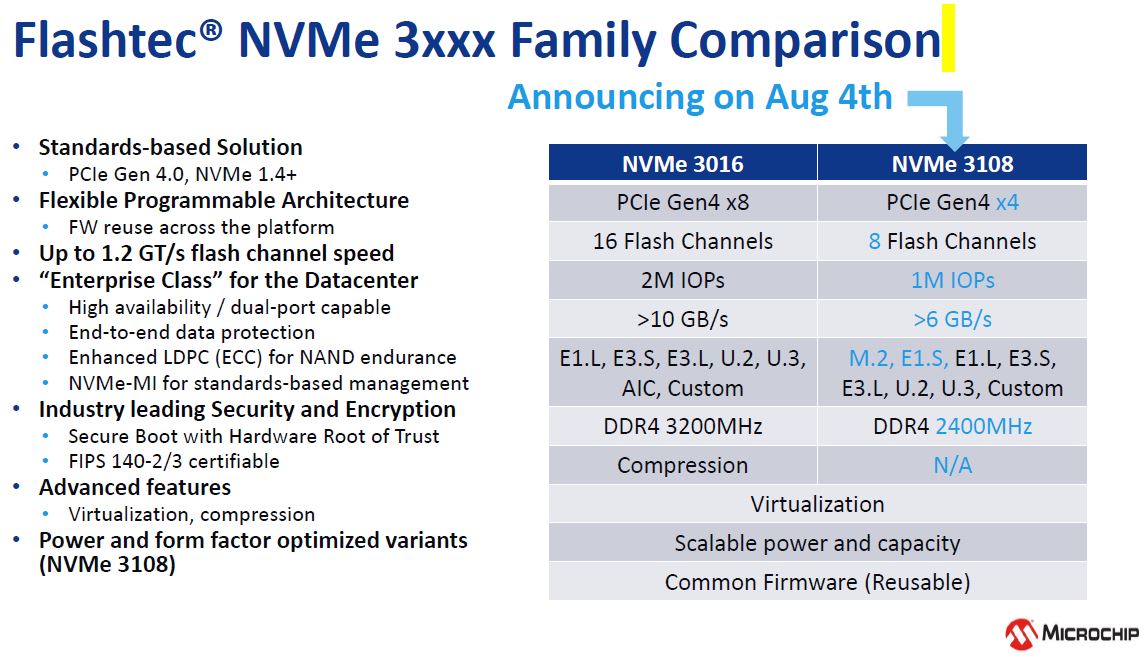
Microchip’s goal is to support a wider array of NAND but then also offer a lot of common firmware options that will help a SSD manufacturer build a complete SSD line while minimizing unique firmware coding.
With the block diagram, there are two major points. First, a decent way to think of the new Flashtec 3108 controller is like half of a 3016 controller. One still gets a lot of the features such as hardware root of trust and secure boot, but other features such as the PCIe Gen4 lanes and flash channels are half as much. In this generation, Flashtec is moving to Arm cores for their controller which gives more flexibility. While it may take some time for Arm to become the dominant in mainstream server CPU sockets, it will surround those sockets in the not too distant future.
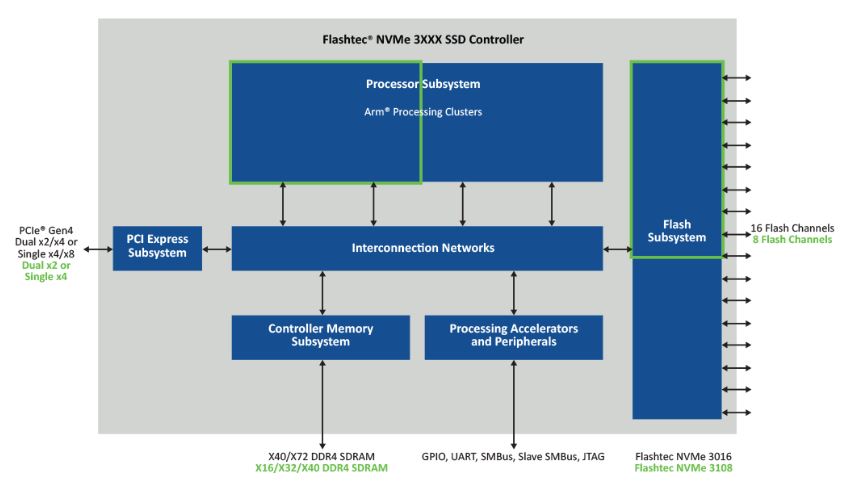
Microchip gave some performance and spec data comparing the drives to the Samsung PM9A3 and Kioxia CD6. This is a slightly strange comparison. Samsung and Kioxia have complete products, and we have both the Kioxia CD6 and CM6 in the lab already and in the publishing pipeline while the new Flashtec NVMe 3108 controller is sampling. It then needs to get designed into drives and make it into production. Then the production silicon needs to get put into drives and validated. Microchip is also discussing form factors, but it is showing specific products versus a controller that is not being produced yet.
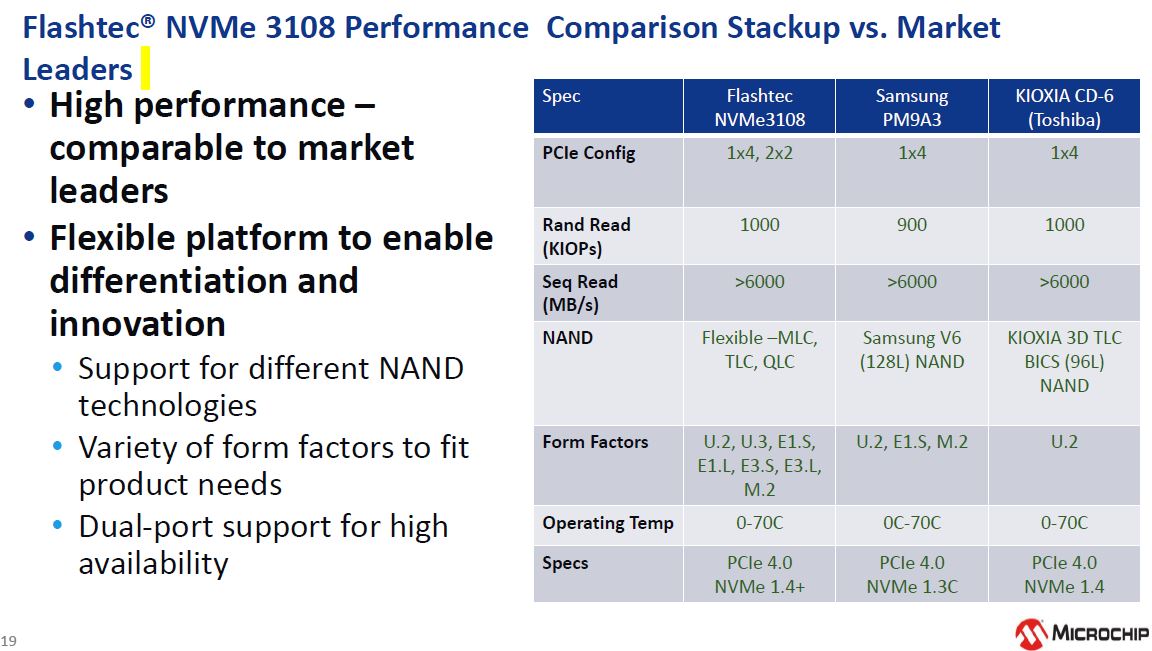
Perhaps Microchip is trying to tell the market that one can use its solutions to, in 2021, catch where Samsung and Kioxia are in 2020. Intel has PCIe Gen4 drives too that was soft-launched during the 3rd Gen Intel Xeon Scalable Cooper Lake event but the company is not pushing those until Ice Lake Xeons arrive.
Final Words
Ultimately, the release of the new Microchip Flashtec 3108 will allow a number of drive manufacturers to bring out PCIe Gen4 devices, especially in 2021 when that market will start an accelerated transition. While some vendors are making their own controllers, merchant solutions such as the Flashtec line help the market by providing a controller that can work across NAND media and at a new data rate.

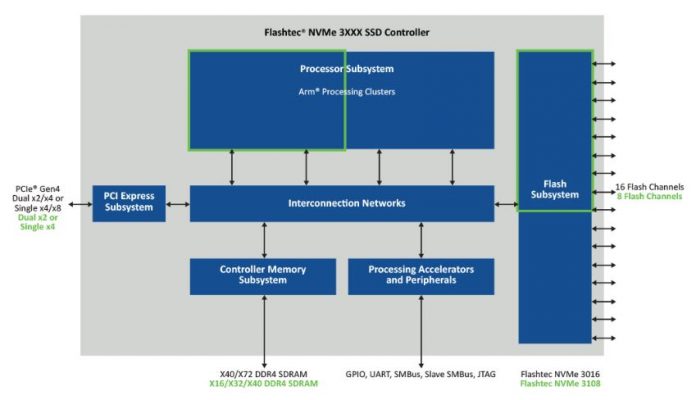


PCIe Gen4 stuff has been coming out pretty slow because AMD is the only one to support it on their higher end chipsets.
Intel will release some stuff soon but it will be a while before it’s mainstream. Probably mostly because consumerwise it’s not really needed yet. (speed wise)
I think PCIe4 x2 is fast enough for consumer and office PCs. Going x2 instead of x4 doubles the number of drives a given PC could support, and that’s important. Most mobos currently have one or two m.2 slots… if SATA goes away then we need 4 or 6 m.2 slots. PCIe4 x2 drives would allow that. My $0.02 anyhow.
Navi
Completely agree – hard to see PCIe4 NVMe being mainstream when the 980 Pro and probably 980 Evo are released – Hopefully these will launch with or sooner than the Tiger Lake based NUCs – I have 66 to replace and hopefully that happens this year.
CORRECTION
“hard to see PCIe4 NVMe being mainstream when the 980 Pro and probably 980 Evo are released”
should be
“hard to see PCIe4 NVMe being mainstream when the 980 Pro and probably 980 Evo HAVEN’T BEEN released”
how about an Edit or at least kill that refresh that deletes your post